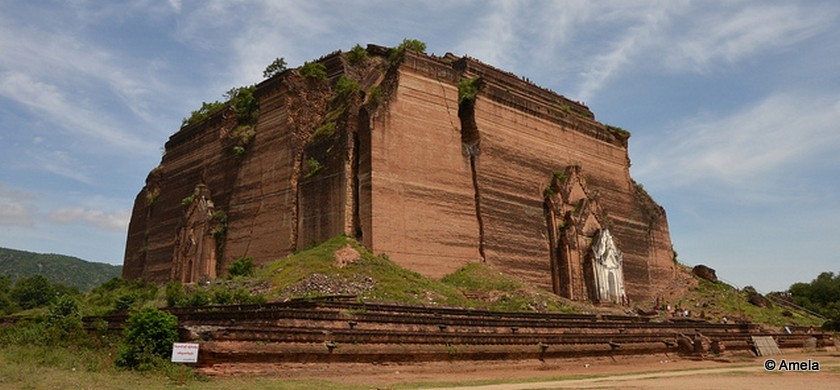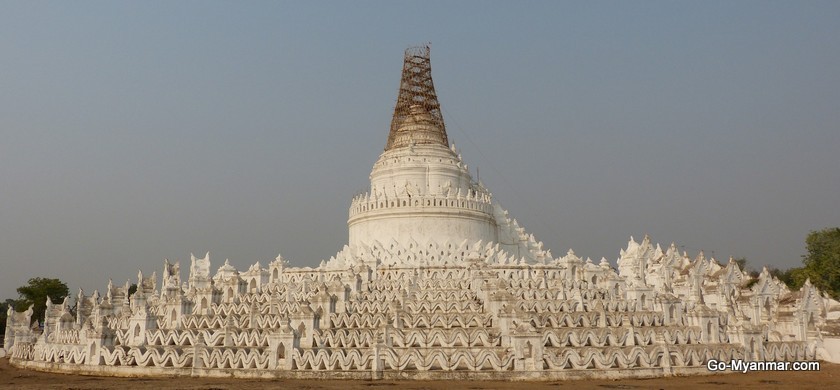
The structure is an impressive sight, and there are panoramic views from the top. Although there are signs telling you not to climb the stairs due to the damage and cracks, locals rarely stop visitors from doing so and sometimes encourage it; as with all pagodas, shoes must be removed and children will sometimes offer leaves to step on in order to protect your feet from the intense heat.
A model of what the stupa was meant to look like had it been finished, called the Pondaw Paya, can also be found nearby. What is said to be the largest uncracked, ringing bell in the world, the 90-tonne Mingun Bell (with a diameter of almost 5 metres) was cast to go in the Mingun Pahtodawgyi, and holds pride of place nearby.
We offer a variety of tours of Myanmar that include Mingun - find out more here.

A few minutes walk to the north of the bell can be found the Hsinbyume (Myatheindan) Pagoda, a white pagoda that is quite different in design and style from most pagodas in Myanmar. It is named after a princess who died in childbirth, and was built in 1816 and restored in 1874, after suffering earthquake damage.
For a wider selection of photos from Mingun, go to our Flickr photo album.
A US$3 entry ticket is required for Mingun, which also gives access to Sagaing; you may be asked for the ticket or to pay at the front of the Mingun Pahtodawgyi.







